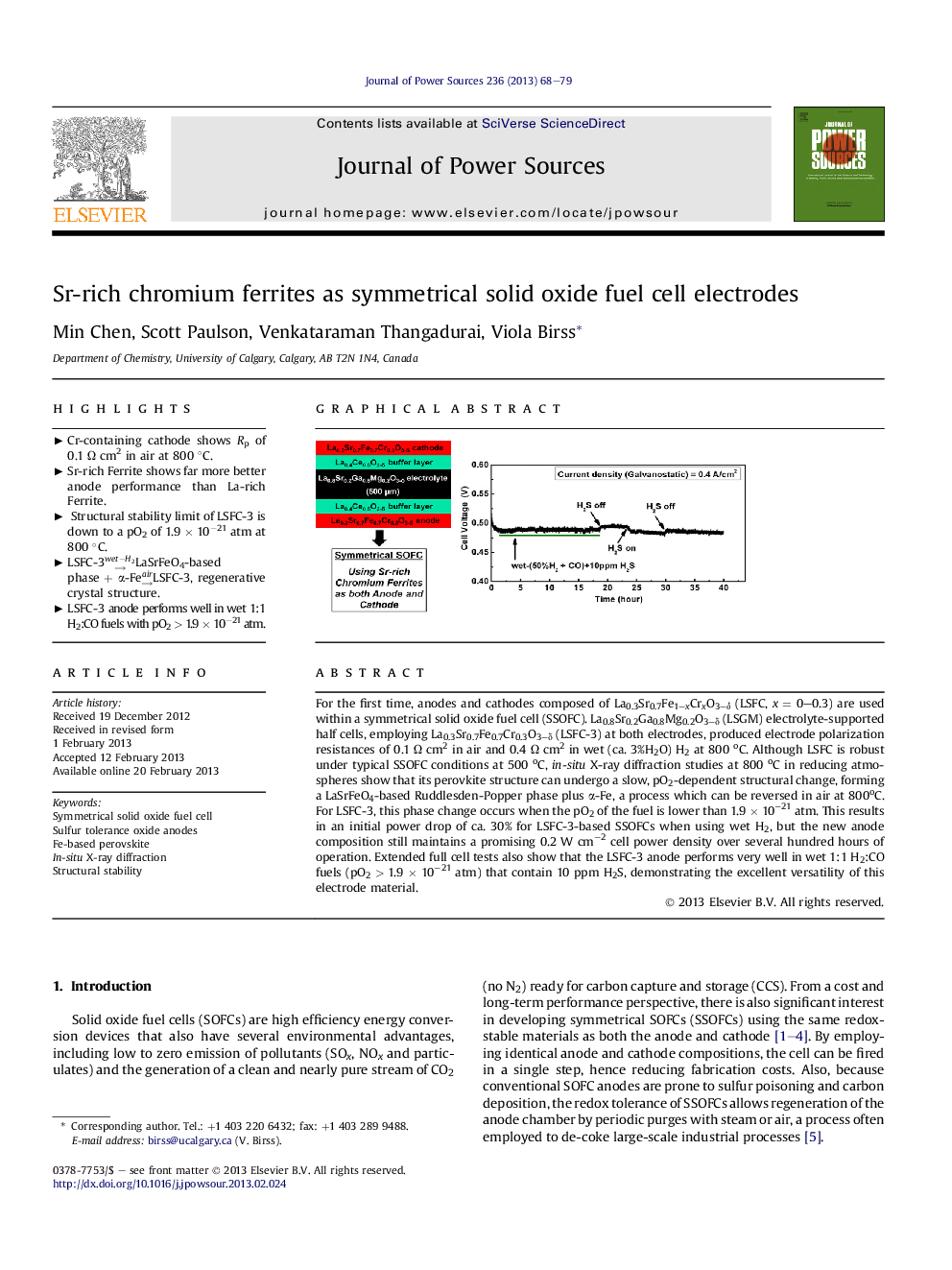| Article ID | Journal | Published Year | Pages | File Type |
|---|---|---|---|---|
| 1287791 | Journal of Power Sources | 2013 | 12 Pages |
For the first time, anodes and cathodes composed of La0.3Sr0.7Fe1–xCrxO3–δ (LSFC, x = 0–0.3) are used within a symmetrical solid oxide fuel cell (SSOFC). La0.8Sr0.2Ga0.8Mg0.2O3–δ (LSGM) electrolyte-supported half cells, employing La0.3Sr0.7Fe0.7Cr0.3O3–δ (LSFC-3) at both electrodes, produced electrode polarization resistances of 0.1 Ω cm2 in air and 0.4 Ω cm2 in wet (ca. 3%H2O) H2 at 800 oC. Although LSFC is robust under typical SSOFC conditions at 500 oC, in-situ X-ray diffraction studies at 800 oC in reducing atmospheres show that its perovkite structure can undergo a slow, pO2-dependent structural change, forming a LaSrFeO4-based Ruddlesden-Popper phase plus α-Fe, a process which can be reversed in air at 800oC. For LSFC-3, this phase change occurs when the pO2 of the fuel is lower than 1.9 × 10−21 atm. This results in an initial power drop of ca. 30% for LSFC-3-based SSOFCs when using wet H2, but the new anode composition still maintains a promising 0.2 W cm−2 cell power density over several hundred hours of operation. Extended full cell tests also show that the LSFC-3 anode performs very well in wet 1:1 H2:CO fuels (pO2 > 1.9 × 10−21 atm) that contain 10 ppm H2S, demonstrating the excellent versatility of this electrode material.
Graphical abstractFigure optionsDownload full-size imageDownload as PowerPoint slideHighlights► Cr-containing cathode shows Rp of 0.1 Ω cm2 in air at 800 °C. ► Sr-rich Ferrite shows far more better anode performance than La-rich Ferrite. ► Structural stability limit of LSFC-3 is down to a pO2 of 1.9 × 10−21 atm at 800 °C. ► LSFC-3→wet−H2LaSrFeO4-based phase + α-Fe→airLSFC-3, regenerative crystal structure. ► LSFC-3 anode performs well in wet 1:1 H2:CO fuels with pO2 > 1.9 × 10−21 atm.
